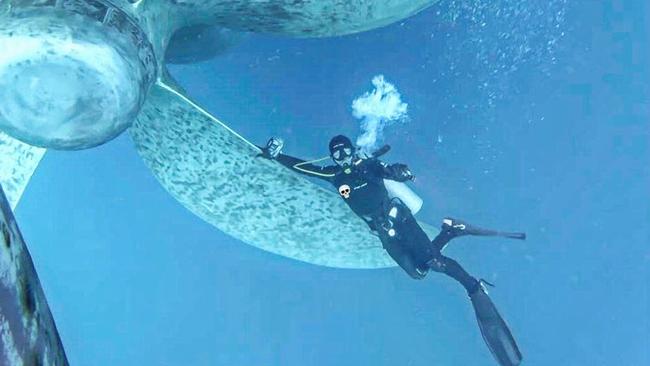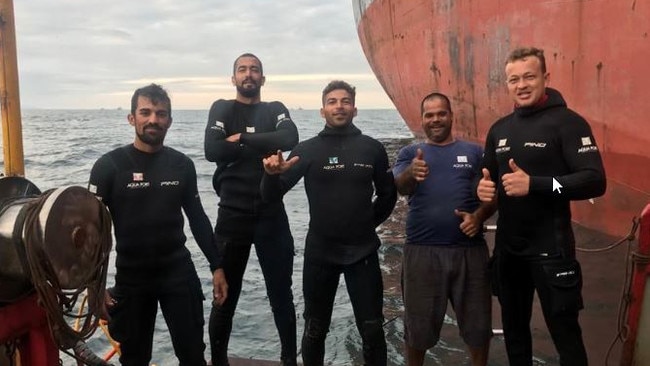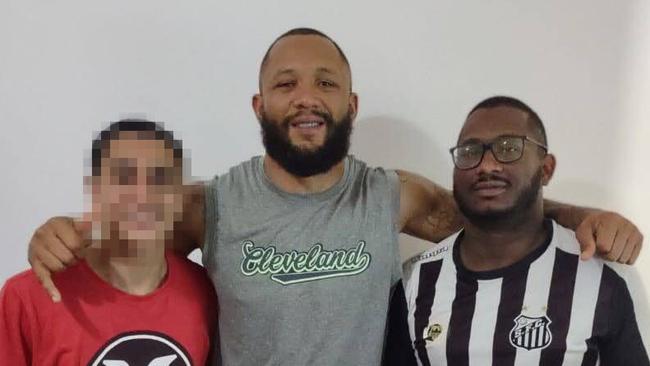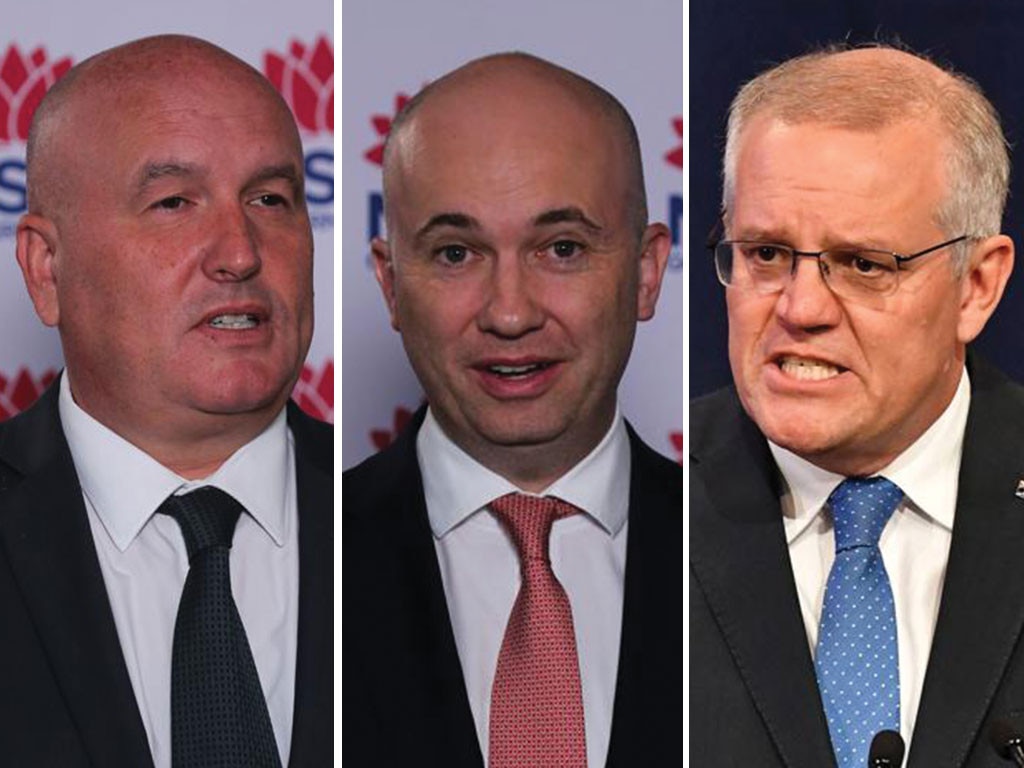Life on the ropes; how a Brazilian surfer met his end as a drug mule in Australia
Days before Brazilian diver Bruno Borges was found in the water near Newcastle on the brink of death, he was on a boat crossing the Timor Sea.

Days before Brazilian diver Bruno Borges is found in the water near the industrial port of Newcastle, surrounded by bricks of cocaine and on the brink of death, he is on a boat crossing the Timor Sea from Indonesia to Darwin.
As he sails across the blue water off the southernmost tip of the Indonesian archipelago, the 31-year-old, who was born Bruno Borges Martins, has no way of knowing that he, and the brazen plot to smuggle more than 100kg of cocaine into Australia and almost 180kg into Indonesia, are doomed.
The web of events that led Borges – as he styled himself – to travel more than 15,000km to act as drug mule in the audacious scheme is as murky as the man himself, whose very name seems to change.
In a whirlwind round-the-world trip, Borges boards a plane from Brazil to Qatar and then Indonesia, before setting sail for Darwin.
On board the vessel is colourful Cairns-based superyacht agent James Blake Blee, 62, who remains the only arrest in connection to the operation so far, with whom Borges will travel to Newcastle, police prosecutors allege in court. The two stop at a wetsuit outlet just off the highway on the outskirts of Newcastle days before the diver would be left for dead.
The mission should be straightforward for experienced divers-for-hire Borges and alleged accomplice, Brazilian national Jhoni Fernandes Da Silva; retrieve the 108kg of smuggled cocaine from the hull of Argentinian cargo ship Areti. GR and ferry it to shore.
It proves a grim and difficult undertaking, the water that rings Kooragang Island where Borges drowns is cold and so impenetrably dark that he and Da Silva have to feel with their hands.
The plot - which NSW police have described as “well-drilled, professional” - comes undone when Borges is found by passers-by on the morning of Monday May 9, unconscious and unable to be revived.

The manhunt for Da Silva and an unknown female accomplice - described as of “thin build, about 150-160cm tall (with) a tanned complexion and blonde/grey hair” - remains ongoing, with police in May releasing CCTV of the pair.
Two days after Borges dies, Blee is arrested while trying to board a flight from Cairns to Singapore; he is extradited to NSW where he is charged with importing and supply a “commercial quantity of border-controlled drug”. He is set to face court again in July.
Authorities are also investigating an alleged link between the Newcastle haul and seizure of about 180kg of cocaine in Indonesia, where drugs are found wrapped in plastic and floating off Java’s Merak port on Sunday May 8, NSW police say.
A coronial inquiry has been scheduled to investigate Borges’ death, with its first mention listed for September.
A likely focus of the inquiry will be the complicated closed circuit rebreather device Borges was wearing when he died, which was supposed to allow him to cross the muddy, industrial harbour without giveaway bubbles and remain submerged for four to eight hours.
Instead, he is believed to have reached the limits of his diving expertise operating the Hollis Prism rebreather, for which he likely didn’t have specialist training, and paid the ultimate price.
The choice tool of covert military operators, rebreathers are highly specialised pieces of machinery that use a chemical to “scrub” carbon dioxide expelled by a user; fewer than 1 per cent of scuba divers are trained to use it.
The model Borges was wearing – which costs about $4000 second-hand, compared to $12,000 to $20,000 for a top of the line model – is “not known for being high quality”, one rebreather expert told The Australian.
“(His death) is more likely to be connected to experience and skill; generally that is the consensus in most rebreather fatalities, it comes down to user error, not an issue with the machine,” the expert said.
Borges, physically fit and covered in tattoos, was a known adrenalin-junkie; a talented surfer and abseiling daredevil, who didn’t shy away from a challenge.
The son of a fishman, originally from São Mateus in Espírito Santo in Brazil’s southeast, Borges worked all over the country – and briefly in the US – as a professional diver on industrial ships and rigs before settling in Santos, home of the largest port in Latin America. He also ran his own rappelling business, Rope Experience.
It’s in the tight-knit world of professional divers “where everyone knows each other” that Borges met Da Silva.

In February 2020, he shared a holiday snap of the two of them aboard a sailboat off a tropical island near Rio de Janeiro surrounded by friends.
More than two years later, Da Silva, a father of two from Praia Grande near Sao Paulo, is a fugitive in a foreign country.
Weeks before he appeared in grainy CCTV photos shared by NSW police, he told his family he was travelling for work. His brother, Jonas Fernandes, believes him innocent, saying Da Silva would never knowingly have become involved in organised crime.
He’s convinced his brother – who lacked the “courage to kill a fly” – could not have known the job involved illegal drugs before accepting. “I am absolutely sure that the Australian police are very wrong about my brother,” he said.
“(When I heard the news), I cried a lot; I was in shock it took me a while to believe it was my brother there on that police page.
“Worst of all, the police commander said my brother is dangerous and for the population not to approach him; I don’t know if I cried or laughed at this nonsense.”
He said he hadn’t had any contact with his brother since the news broke, urging him to get in touch to let him know he is safe. “If I could talk to him, I would say rest assured that all our family knows his nature and his character, we are on his side,” he said.
Borges’ friends similarly cannot comprehend he would willingly become involved in drugs, yet just a week before his death Borges had told his family in Espírito Santo in Brazil that he was going mountain climbing.
Relative Raphael Munoz said the whole family was “surprised” that hardworking, gentle Bruno had become mixed up in organised crime. The family is still fighting for his body to be returned to Brazil. “His mother asked for help to bring his body to Brazil and in two days he got 80,000 Brazilian real ($22,850),” he said.
“If he was a bad guy he wouldn’t get help from anyone.”
Fellow diver and friend Alex Ferreira said rebreathers were rare in Brazil and he doubted Borges was properly trained to use one, adding that divers tended not to ask “too many questions” when a proposal came along.
NSW police continue to investigate the alleged smuggling plot under Strike Force Groove.



